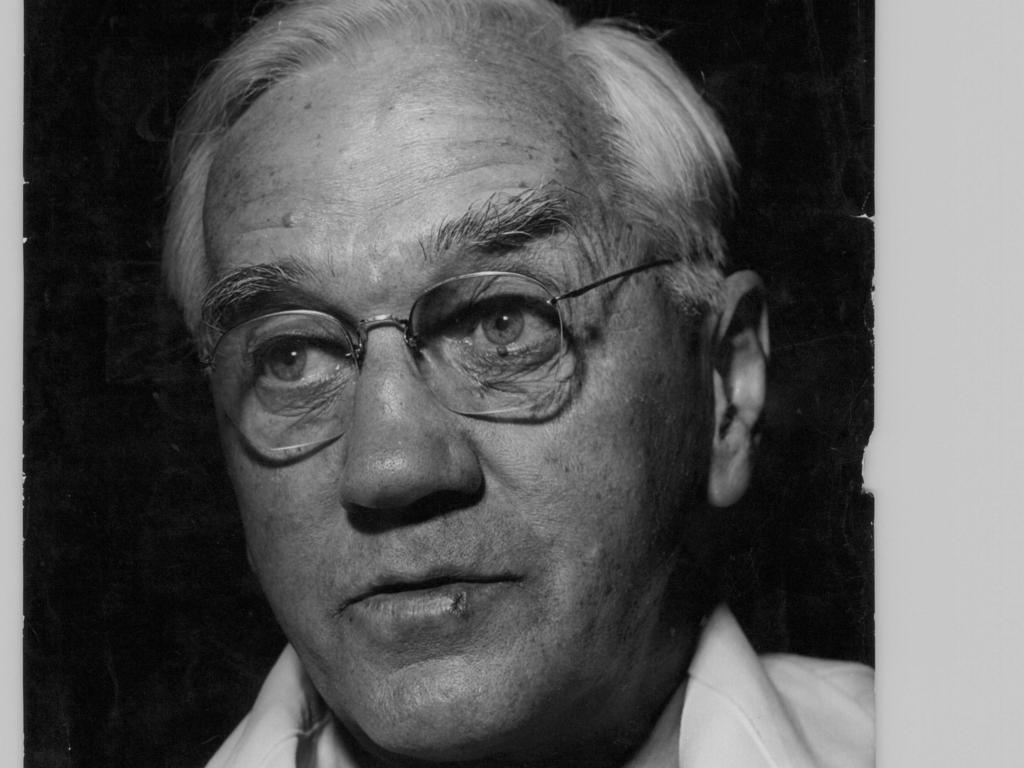How accidental erections led to one of modern medicine’s biggest breakthroughs
A group of men were taking part in a medical trial when they realised they all had one strange symptom in common — then the world changed.
In the almighty search for a cure for impotence, it seemed like everything had been tried, from tiger penis soup to monkey testicle implants to making a meal out of a goat’s testes.
The inability of the male to attain and maintain an erection for sexual intercourse was once said to be the modern curse of man.
And, in some cases, women were to blame.
In fact, the earliest reference to impotence was found in 8th Century BC in India and the ancient Hindus believed impotence could be caused by having sex with a “distasteful woman”.
The very word impotence is derived from the Latin word “impotencia”, which translates to “lack of power”.
Suggested remedies included eating goat’s testes. Men were advised to add salt, powdered pepper fish and clarified butter to enhance the flavour. Or there was the option of boiling the testes in a pot of milk.
Back in the mid 17th Century, Frenchman Nicholas Vennette’s comments mirrored the view of virtually everybody when it came to the treatment of impotence when he said: “If a woman’s hand, which is the best of all remedies, is not good enough to cure the flabbiness of a man’s penis, the other remedies will do little.”
But researchers eventually discovered the cure for impotency by sheer accident with the creation of Viagra, which changed the lives of countless love lives 23 years ago this month.
How did a drug that was originally meant to treat heart problems end up saving the relationships of millions of satisfied people?
Viagra was one of many drugs that were discovered, like a miracle, quite by accident.
RELATED: Kodak founder’s perfectly timed death
RELATED: The ad you’d never see today
RELATED: First mobile phone call was an epic brag

Viagra
In the late 1980s, British Pfizer scientists Peter Dunn and Albert Wood created the drug sildenafil citrate (also known as UK-92480) that they hoped would help treat high blood pressure and angina; the pain linked to coronary heart disease.
Pfizer had been trying without success to develop the drug and there were rumblings among the scientific set that things weren’t going well.
But the scientists kept working on the drug in the hope of a breakthrough.
They eventually got a huge breakthrough — but it wasn’t the one they were expecting.
While testing the drug on a group of miners they discovered an interesting side effect — all the men in the test group agreed they “had more erections during the night than normal”.
That’s when the scientists changed direction and started researching ways the drug could help cure impotency. The men were given the drug and taken to a lab where they were asked to watch porn movies.
You can imagine the rest.
Put simply; the drug worked wonders.
How does it work? It relaxes the muscles allowing more blood to flow into the penis.
According to researcher Ian Osterloh: “With UK-92480′s chances of treating angina now slim, we decided to run pilot studies in patients with erectile dysfunction.”
In April 1996, Pfizer patented sildenafil citrate in the US and, a year later, the drug, now named Viagra, was officially approved to treat erectile dysfunction.
Said to be a drug that would “free the male libido from the emasculating doings of feminists” (according to Penthouse publisher Bob Guccione), Viagra was known as the hottest new drug in the world.
And it’s not the only drug that was discovered entirely by accident.
LITHIUM
In the 1840s Lithium was used to treat gout and bladder stones. But, 100 years later, psychiatrist John Cade noticed that guinea pigs that were injected with lithium became sedated, as opposed to getting excited.
This discovery led to clinical studies that showed Lithium was effective in preventing “mania” and it was released to the public after it received FDA approval in 1970.
These days it’s the most widely used medication for treating bipolar disorder.
PENICILLIN
In 1928 Alexander Fleming discovered penicillin while he was investigating influenza, which was one of the major killers in those days. The Spanish Flu epidemic in 1918 killed 10 times more people than WWI.
When a tiny dust particle contaminated one of the Petri dishes containing staphylococcus, this resulted in a patch of mould. Fleming noticed that around the mould was a clear, bacteria-free zone. This mould, eventually called penicillin is one of the most significant medical discoveries of all time. Fleming was later awarded a Nobel Prize and a knighthood.

THE CONTRACEPTIVE PILL
Scientists in the 1950s were determined to create a safe prophylactic, (a medicine to prevent disease) and began testing synthetic progesterone on women.
When the scientists removed “impurities” from the drug they realised the study results worsened and then discovered that the “impurity” was oestrogen. That led to the discovery that a pill that combined the two hormones could prevent pregnancy.
In the early 1960s, the birth control pill was introduced to the public consisting of synthetic hormones that mimic the way oestrogen and progesterone work.
The pill works by preventing ovulation; when a woman is on the pill, no new eggs are released because the pill makes her body believe she is already pregnant.

NOVOCAINE
In 1884, cocaine was used as a local anaesthetic but it was found to cause addiction and death. So, the race was on to find a safer substitute. German chemist Alfred Einhorn eventually discovered the injectable local anaesthetic procaine, which became Novocaine.
These days it’s used to numb a local area, such as numbing the mouth while a patient is undergoing a dental procedure
LSD
In the early 1940s, Swiss chemist Albert Hoffman was working in his lab, trying to come up with a new drug to treat post-partum haemorrhaging.
He happened to touch a small portion of LSD-25 with his fingers and soon his world began to change.
In his diary, he wrote, “I perceived an uninterrupted stream of fantastic pictures, extraordinary shapes with intense kaleidoscopic play of colours”.
In April 1943, Hoffman experimented with just 0.25mg of the drug before riding home on his bicycle. Apparently, the world around him melted, he saw all sorts of wild things and that day is officially known as “bicycle day”. Hoffman was the first person to ever trip on acid.
TAMOXIFEN
Tamoxifen was first made in 1966 by scientists who were working on finding a new emergency contraceptive. But the drug initially failed when it was found that it stimulated ovulation instead of suppressing it.
Instead, it was found to treat oestrogen-positive breast cancer, which makes up 50 to 70 per cent of cases. In some cases, tamoxifen has been credited for helping prevent the development of breast cancer in high-risk patients.
BOTOX
When botulinum was first used in the early 1980s, it was injected into the forehead to stop eyelid twitching. But it didn’t take long for the cosmetic industry to jump onboard.
By 1989, the powerful neurotoxin was used to paralyse forehead muscles and alleviate frown lines.
These days the drug, known more commonly as Botox, is also used to alleviate symptoms of chronic migraines, symptoms of Parkinson’s disease and also bladder spasms.

LJ Charleston is a freelance historical journalist. Continue the conversation @LJCharleston



